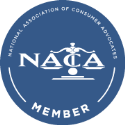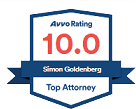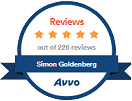Income-Driven Repayment Plans
For years student loans have been an ever growing concern. As the cost of tuition consistently grows and the job market continues to become overcrowded. Student debts become harder and harder to pay off. It is with this in mind that the United States’ government has spent years attempting to solve the enigma of making student loans affordable. One of the bigger successes in the ongoing embattlement on student loan debts has been the creation of Income-Driven Repayment Plans for qualified federal loans.
Income-driven student loan repayment plans simply put are repayment plans directly linked to your annual income. As of now there are 3 primary income-driven repayment plans offered:
- “Income-Based Repayment (IBR)”;
- “Pay-As-You-Earn (PAYE)”; and
- “Income Contingent Repayment (ICR)”
These plans are designed in a manner to help keep you on top of your loan repayment by capping your repayment rate at a lower amount based off your annual income. While this can be great, bare in mind that paying less monthly will also mean that you will being paying back your debt for a longer time and as such you will garner more interest on your loan. So while these plans are great if you have a lower income, they are not necessarily right for everyone. All of these plans also set out a debt discharge date that declares after a certain amount of time any payments you still owe will be forgiven.
Income-Based Repayment (IBR)
The Income-Based Repayment plan is currently the most accessible of the available Income-driven Repayment plans. The plan is available to any student who has taken out a Direct or FFEL loan as well most feral loans. in order to qualify for an IBR must meet a standards of a “Partial Financial Hardship” (PFH).. This Means if the standard loan repayment rate would cost more than 15% of your annual Income you qualify.
There are two different versions of this plan: “2014” and “classic”. Both are very similar but have some slight differences. The IBR “2014” is available for borrowers who have taken out their first loan after July 1, 2014. Anyone who has taken out federal loans before then qualify for IBR Classic. Both plans determine your loan payment through a sliding scale ratio based on total household income by how many people in a household.
The big difference between the two plans is the payment percent Capping and the debt discharge time. Under the Classic plan the monthly payment cap is set at 15% and your debt will be discharged after 25 years and 300 payments. With the 2014 pan the the payment cap gets dropped to 10% and the discharge will occur after 20 years and 240 payments. For the most part may be a good fit for you have low income or if you are facing temporary financial hardship.
Pay-As-You-Earn (PAYE)
The PAYE plan was put into place in 2012. It was designed as companion to the not yet passed 2014 IBR plan to provide recent borrowers the same rates and debt forgiveness protections. To qualify for the plan you must have had no student loans taken out before October 1, 2007 and you must have at least 1 federal loan taken out after September 30, 2011. Additionally, you must meet a stricter standard of PFH then required by IBR. The PFH requirements for PAYE dictate that you qualify if the standard 10 year loan repayment rate costs more than 10% of your annual income.
If you happen to meet these strict requirements then you are given a repayment plan that is based on a ratio of your Family income to Number of people in your household. The maximum payment cap is at 10% and any debts owed after 20 years are discharged. While the PAYE plan has the same Cap and Discharge time as the 2014 IBR the monthly payment percent is generally a third of rate.
President Obama recently proposed loosening up the requirements for the PAYE repayment plan to open it up to anyone who has a Federal loan and meets the standards for PFH. The proposal is likely to be passed by congress by the end of the year.
Income Contingent Repayment (ICR)
Income Contingent Repayment is the oldest of the available Income-Driven Repayment plans. It is also the most readily available. The rate you pay monthly is determined by one of two algorithms. 20% of discretionary income divided by 12 or the amount you would pay in 12 years multiplied by a varying percentage factor of your annual income. Whichever resulting rate from these algorithms is lower will become your payment rate under the ICR plan. Under this plan your repayment will be capped at 20% of your income and any remaining balance will be forgiven after 25 years.
ICR plans have the most lax qualifications of the available Income-driven repayment plans. The only qualification is that you have taken out Direct loans. Unlike the other plans ICR plans will not disqualify you if your original loan was a Parent PLUS loan. However, if your loan was a Parent PLUS loan you need to have the loan consolidated and brought into the Direct loan program.
How can I apply for an Income-Driven Repayment Plan?
When applying for an Income-Driven Repayment the first thing you will want to do is call your loan servicer. They will be able to give you more information on each of the plans discussed above. If you have decided that Income-Driven Repayment is right for you then will have to fill out and submit an Income-Driven Repayment plan Request. You can either fill out a physical paper form with your servicer or you can fill out a digital form online at Studentloans.gov. With this form you can either select the repayment plan of your choice or you can select to have your servicer determine which plan will grant you the lowest monthly payment.
In addition to filling out an Income-driven Repayment Plan request you must also provide documentation of your adjusted gross income. This can be done in one of two ways. The quickest option is if you are submitting your request online you can access the “IRS Data Retrieval Tool” which will directly input your most recent income tax return information directly into the digital form. Alternatively, If you are placing a paper request you must obtain a paper copy of your most recent IRS tax return transcript.
(Note: If you currently have do not earn income, or receive untaxed income, you can notate that on your application and you will not need to provide additional income documentation.)
*Disclaimer: While many of these Income Driven Repayment plans may result in lower monthly rates they may ultimately cost more in the long term even with their built in loan forgiveness. If you can afford the standard 10 year plan it is most often the most cost efficient in the long term. Before you decide to refinance your loan be sure to contact your loan servicer to make sure you are entering the best plan for you.
All the information on this page is subject to change. The information on this page may become outdated and may be irrelevant to your particular loan situation. For advice on your accounts, seek a review with an attorney.











